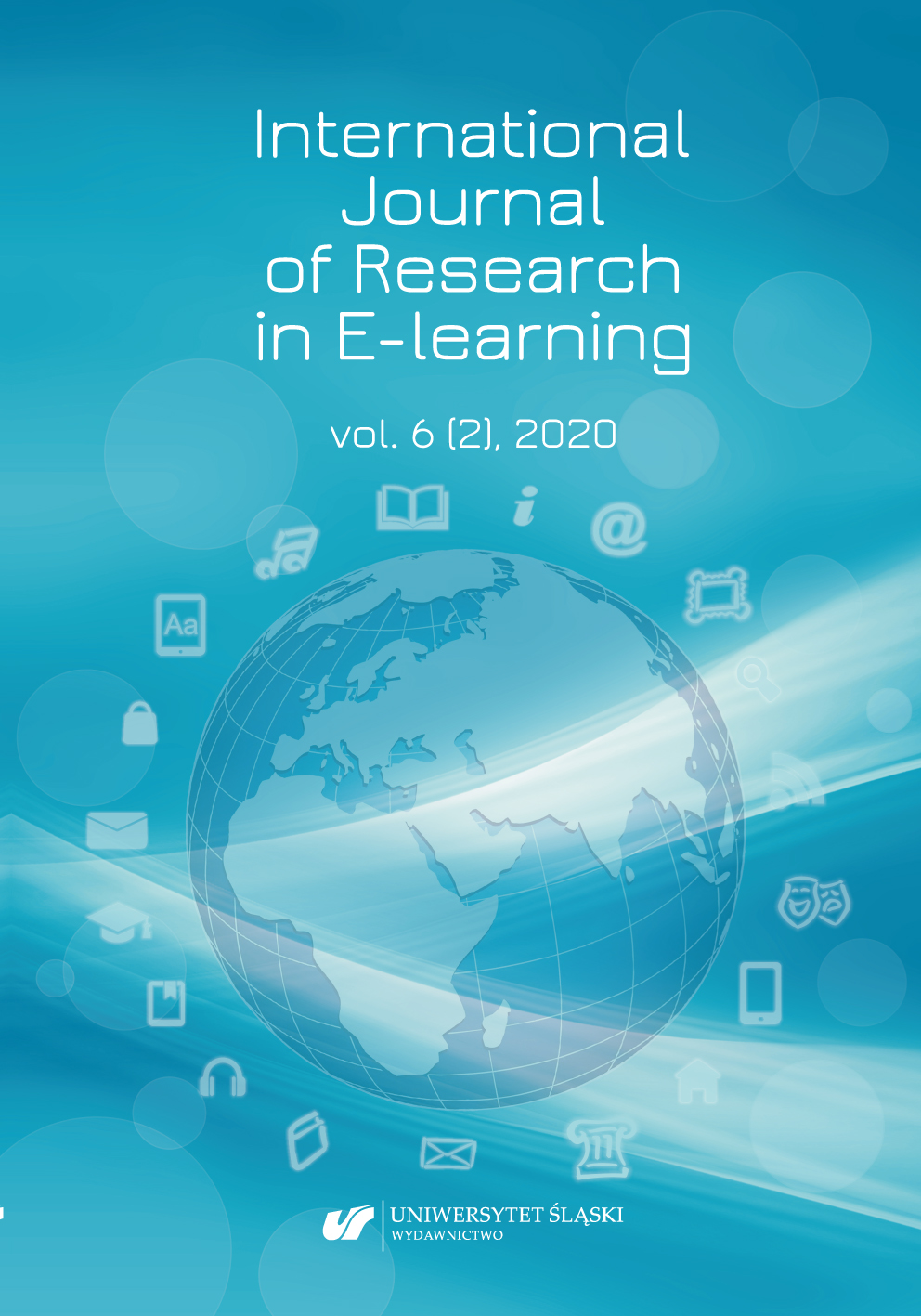Babbie, E. (1992). The practice of social research. Wadsworth Publishing Company.
Google Scholar
Flick, U. (2007). Designing qualitative research. SAGE Publications Ltd.
Google Scholar
Gołaszewska, M. (1999). Multimedia – krytyka i obrona. Esej o estetycznym statusie nowych mediów (Multimedia – criticism and defense. An essay on the aesthetic status of new media). In K. Wilkoszewska (Ed.), Piękno w sieci. Estetyka a nowe media (pp. 29–33). Universitas.
Google Scholar
Green, L. (2006). Popular music education in and for itself, and for other music: Current research in the classroom. International Journal of Music Education, 24(2), 101–118. https://doi.org/10.1177/0255761406065471.
Google Scholar
Hamerski, J., Jakubowska, E., Jóźwiak, M., & Putkiewcz, A. (2014). Inspiracje muzyczne do podręcznika “Nasz elementarz” (Musical inspirations for the textbook “Nasz elementarz”). MEN.
Google Scholar
Hyla, M. (2012). Przewodnik po e-learningu (E-learning guide). Wolters Kluwer Business.
Google Scholar
Jorgensen, E. R. (2003). Transforming music education. Indiana University Press.
Google Scholar
Journal of Laws (2017). Rozporządzenie Ministra Edukacji Narodowej z dn. 14. lutego 2017 r. w sprawie podstawy programowej wychowania przedszkolnego oraz podstawy programowej dla szkoły podstawowej (Regulation of the Minister of National Education of February 14, 2017 on the core curriculum for preschool education and the core curriculum for primary school). Dz. U. poz. 356. MEN.
Google Scholar
Journal of Laws (2020). Rozporządzenie Ministra Edukacji Narodowej z dn. 20 marca 2020 r. w sprawie szczególnych rozwiązań w okresie czasowego ograniczenia funkcjonowania jednostek systemu oświaty w związku z zapobieganiem, przeciwdziałaniem i zwalczaniem COVID-19 (Regulation of the Minister of National Education of March 20, 2020 on special solutions in the period of temporary limitation of the functioning of education system units in connection with the prevention, counteraction and combating COVID-19). Dz.U. 2020, poz. 493. MEN.
Google Scholar
Jóźwiak, M., Putkiewicz, A., & Rozmus, K. (2015). Inspiracje muzyczne do podręcznika “Nasza szkoła” (Musical inspiration for the textbook “Nasza szkoła”). MEN.
Google Scholar
Juszczyk-Rygałło, J. (2013). Multimedia w procesie kształcenia wczesnoszkolnego (Multimedia in the process of early childhood education). In J. Kancir (Ed.), Aktuálne otázky prírodovednotechnických predmetov a prierezových tém v primárnej edukacji (pp. 80–90). UK PUvP.
Google Scholar
Juszczyk, S. (2002). Edukacja na odległość: Kodyfikacja pojęć, reguł i procesów (Distance education: Codification of concepts, rules and processes). Adam Marszałek.
Google Scholar
Kisiel, M. (2012). Child as an active student in music education. Wydawnictwo Uniwersytetu Śląskiego.
Google Scholar
Kisiel, M. (2016). Dwoistość, znaczenie i rola mediów w edukacji muzycznej uczniów klas początkowych (The duality, importance and role of the media in the music education of primary school students). In M. Karasová, & M. Uhrinová (Eds.), Analyza sucasneho stavu problematiky realizacie medialnej vychovy v primarnom vzdelavani v kontexte vyskumov medialneho posobenia na spravanie ziaka (pp. 109–126). Verbum.
Google Scholar
Kisiel, M. (2018). Multibooki wsparciem dla nauczyciela oraz inspiracją aktywności muzycznej uczniów klas początkowych (Multibooks as a support for the teacher and inspiration for the musical activity of primary school students). In T. Jablonský (Ed.) Studia Scientifica Facultatis Peaedagogicae Universitas Catholica Ružomberok no. 2, ročník XVII (pp. 60–70). Verbum.
Google Scholar
Ruokonen, I., & Ruismäki, H. (2016). E-learning in music: A case study of learning group composing in a blended learning environment. Procedia – Social and Behavioral Sciences, 217, pp. 109–115. https://doi.org/10.1016/j.sbspro.2016.02.039.
Google Scholar
Weiner, A. (2010). Kompetencje muzyczne dzieci w młodszym wieku szkolnym. Determinanty, zależności, perspektywy rozwoju (Musical competences of children at a younger school age. Determinants, dependencies, development prospects). UMCS.
Google Scholar


 https://doi.org/10.31261/IJREL.2020.6.2.03
https://doi.org/10.31261/IJREL.2020.6.2.03
